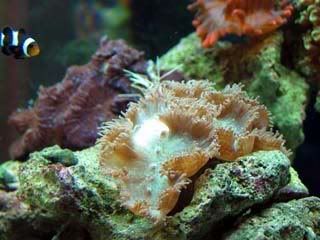elegance coral
Member
The Clownfish being hosted by the Elegance never bothered the coral and it showed no ill effects. This only occured for a couple of months and during the whole time the coral was always fully expanded and healthy. The change to the coral is what caused it's demise but it was slow process of tissue recession.
The Elegance that my LFS has is on the top portion of the tank under a 10k 150w DE bulb and very healthy and I'm certain that was properly acclimated.
I really hate to disagree with you especially since this thread has made a turn for the positive.
The pic you posted and the one I posted of the two Elegance corals are not pics of fully expanded and healthy corals. Your coral was showing ill effects. I don't know if it was because of the clown or if it had gone through a rough time and was recovering, or a combination of the two.
I kept an Elegance under bright lights like your LFS myself. It was about 12 inches from a 250W 5500K MH and VHO's. It was a very happy coral.


